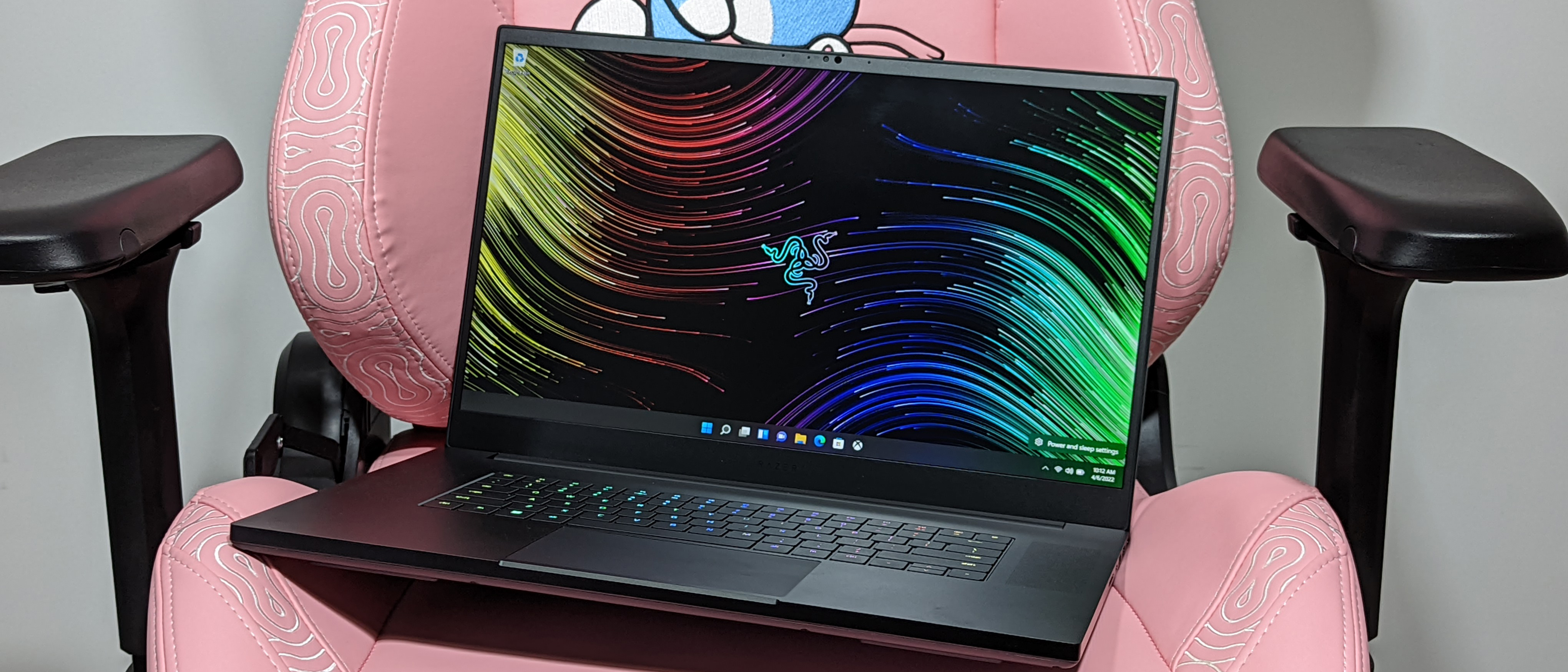Laptop Mag Verdict
The Razer Blade 17 packs strong performance, great speakers, and decently long battery life, but its dim display and egregiously expensive price point gives us pause.
Pros
- +
Comfortable keyboard
- +
Great speakers
- +
Strong performance and graphics
- +
Solid battery life
Cons
- -
Annoyingly expensive
- -
Tired design
- -
Dim display
Why you can trust Laptop Mag
Most gamers know by now that if you’re looking for a Razer product, you’re going to have to pay that Razer tax, and while that could be chalked up as “you get what you pay for,” that doesn’t apply to the latest Razer Blade 17 (Early 2022).
The Razer Blade 17 does offer strong performance (via an Intel Core i7-12800H CPU and Nvidia GeForce RTX 3080 Ti GPU), a great set of speakers, a comfortable keyboard, and enough battery life to get you through two viewings of The Batman. All of that might be worth its frustrating $4,000 price tag. However, a display so dim that it belongs on a Chromebook is a sore spot.
I wouldn’t advocate for the Razer Blade 17 to show up on our best gaming laptops or the best Razer laptops page, but it’s still a solid piece of gaming hardware if you’re rolling in dough and consider opting for a different display.
Razer Blade 17 price and configurations
Price: $4,000
CPU: Intel Core i7-12800H
GPU: Nvidia GeForce RTX 3080 Ti
RAM: 32GB
Storage: 1TB SSD
Display: 17-inch, 1080p, 360Hz display
Battery: 6:05
Size: 15.55 x 10.2 x 0.8 inches
Weight: 6.1 pounds
No matter how you slice it, the Razer Blade 17’s price tag will have you questioning your life decisions. Our review unit cost $4,000, and it came with an Intel Core i7-12800H processor, an Nvidia GeForce RTX 3080 Ti GPU with 16GB of VRAM, 32GB of RAM, a 1TB SSD, and a 17-inch, 1080p, 360Hz display.
Even the cheapest model is as expensive as a used car, charging $2,700 for the same laptop with lesser components, such as an RTX 3060 GPU, 16GB of RAM, and a 17-inch, 1440p, 165Hz display (this arguably is better depending on your needs). Believe it or not, there’s an even more expensive model for $4,300, upgrading you to a Core i9-12900H CPU and a 17-inch, 4K, 144Hz display.
If you’re looking for a gaming laptop that won’t upcharge you for the sake of branding, check out our best cheap gaming laptops page.
Razer Blade 17 design
What more can I say about the Razer Blade’s design that hasn’t already been said by hundreds of journalists? It’s black, metal, and there’s green snakes — boring, tired. It doesn’t have to reinvent the wheel to impress me, but it damn well better look like a four grand machine. Try again.
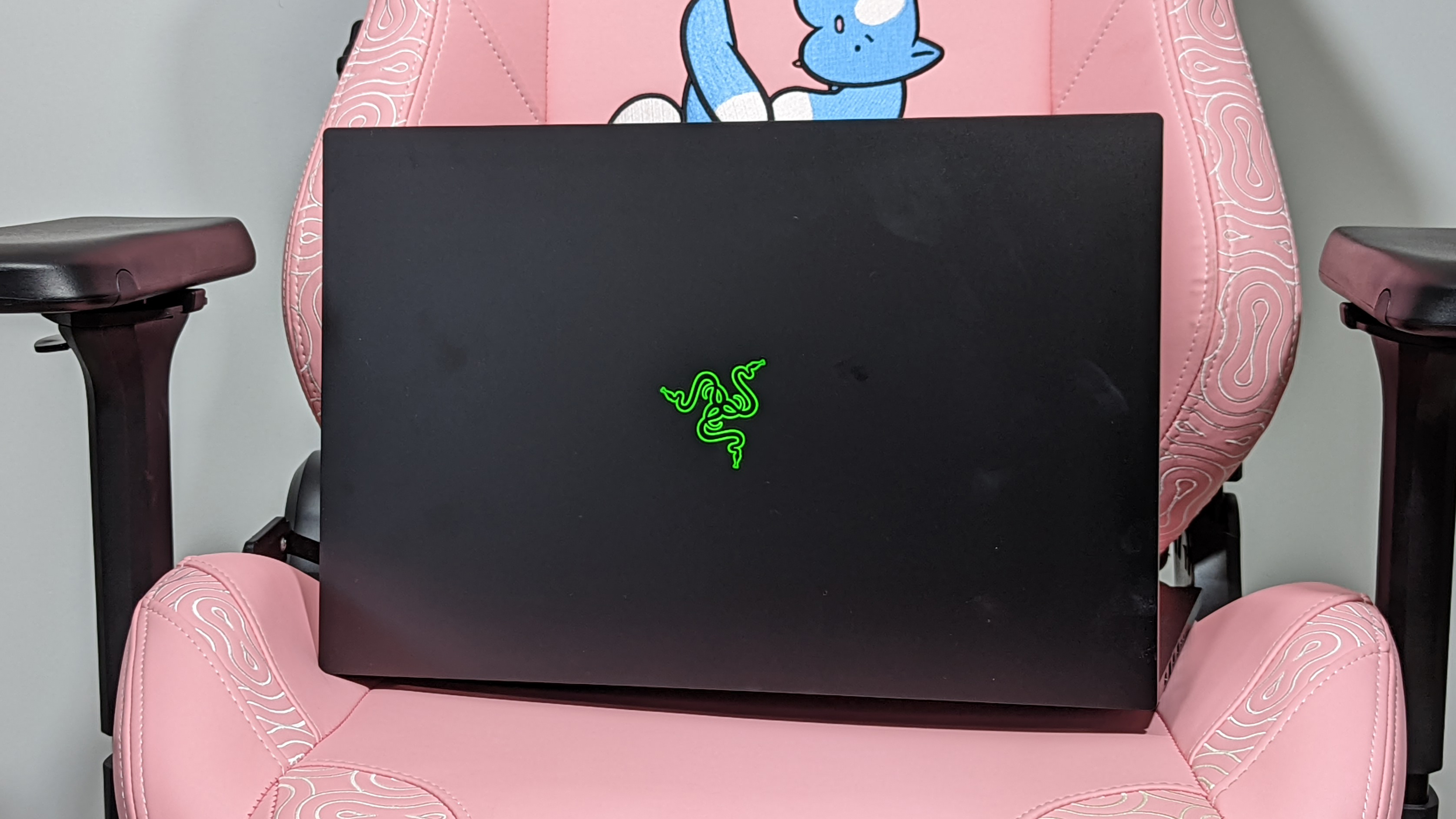
Nothing frustrates me more than wasting space, and that’s exactly what this interior does. There are speaker vents on either side of the keyboard the size of two of my fingers, and normally I would be a fan if the keyboard wasn’t so tiny. It doesn’t even have a number pad — on a 17-inch laptop? These speakers better blow me away. At the very least, the bezels around the display are relatively slim, and the webcam is even on the top bezel.
At 6.1 pounds and 15.55 x 10.2 x 0.8 inches, the Razer Blade 17 isn’t as heavy or thick as some of its competitors, so it has that going for it. The Alienware x17 R2 comes in at 6.5 pounds, 15.7 x 11.8 x 0.8 inches and the MSI GE76 Raider shows up at 8.8 pounds, 15.6 x 11.2 x 1 inches.
Razer Blade 17 ports
There’s a decent number of ports onboard the Razer Blade 17.
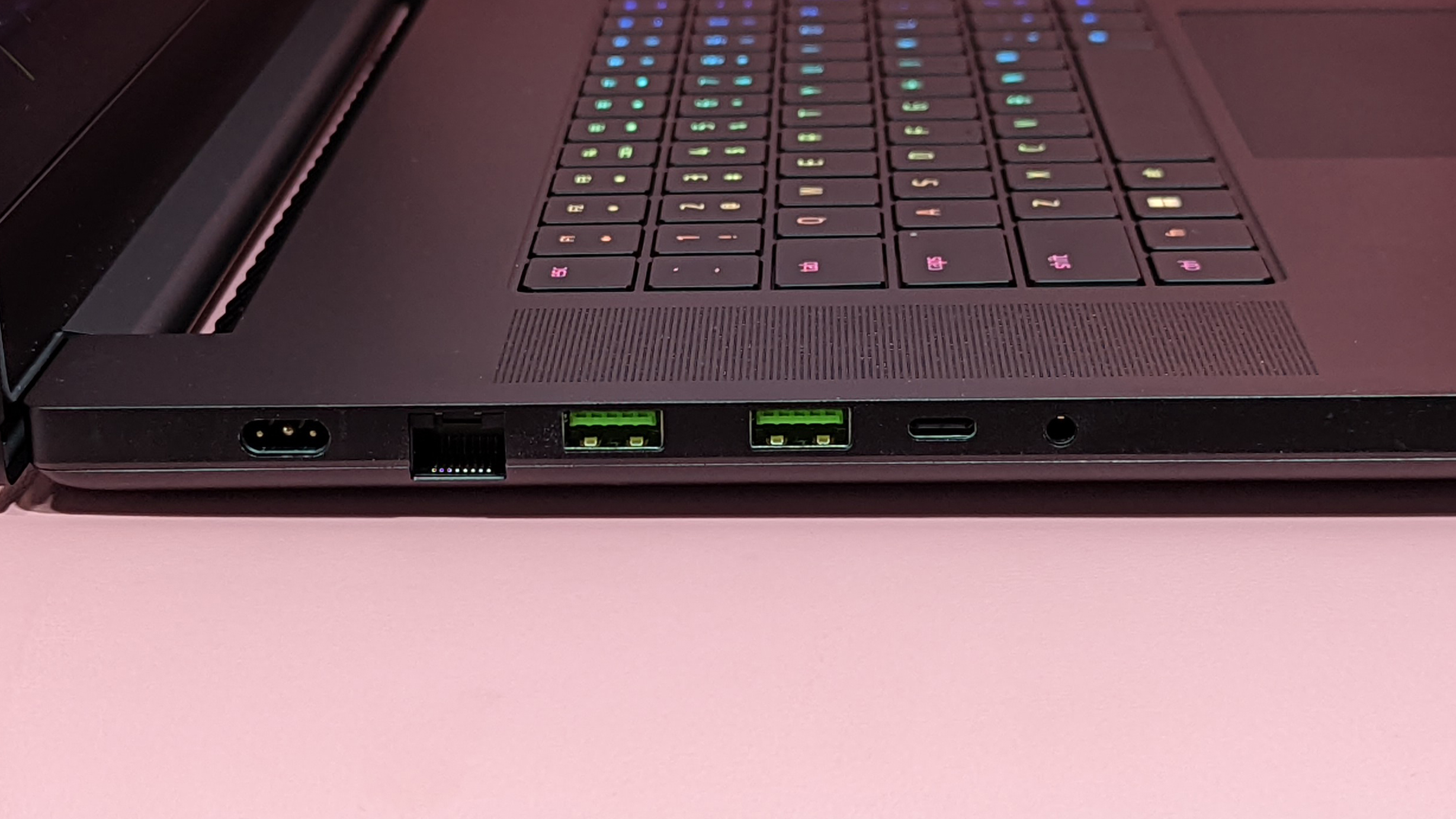
On the left there’s the power jack, an RJ45 port, two USB Type-A ports, one Thunderbolt 4 port and a headphone jack. The right side features a lock slot, an HDMI port, one USB Type-A port, one Thunderbolt 4 port and an SD card slot.
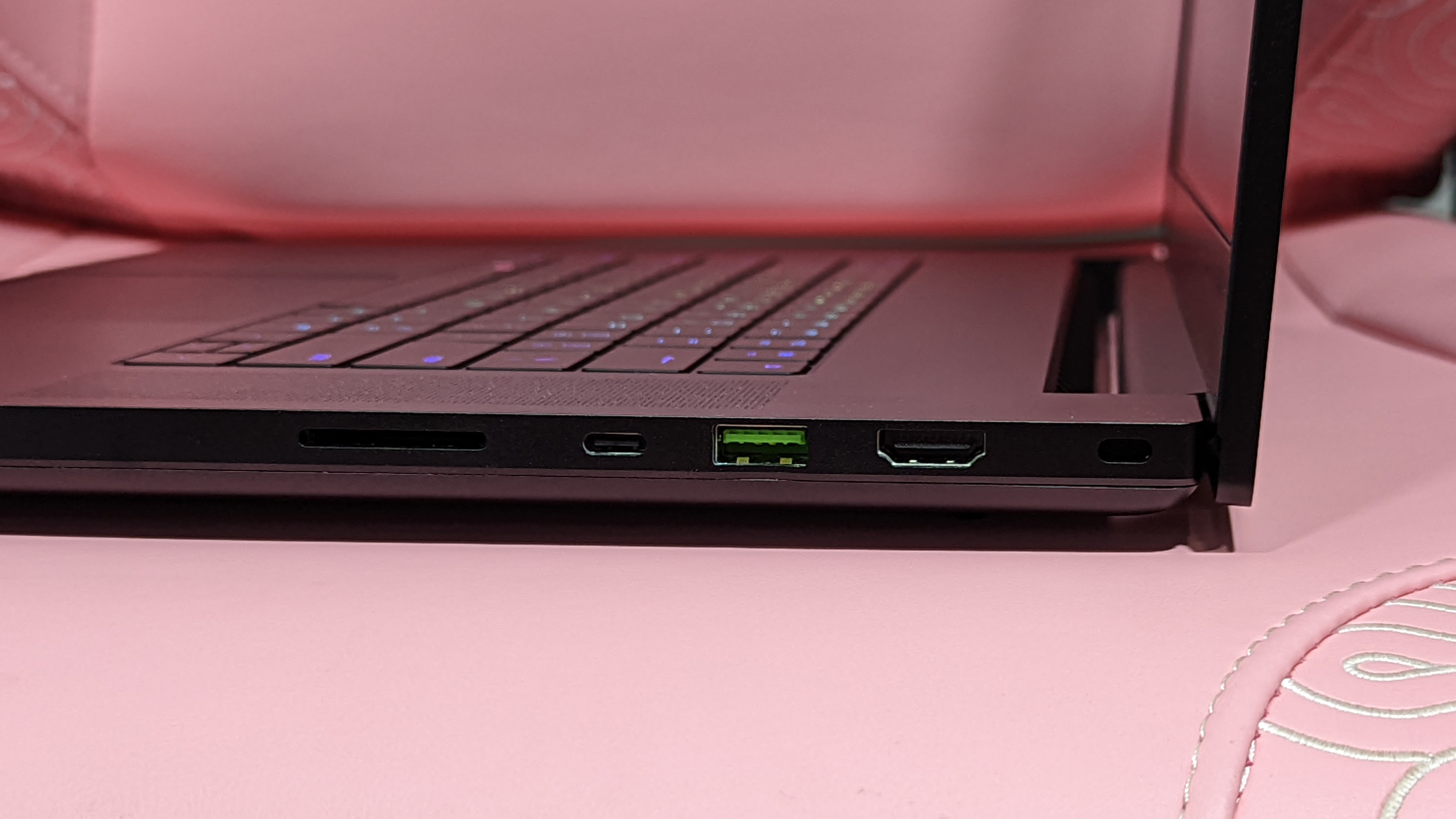
If you need more ports, check out our best USB Type-C hubs and best laptop docking stations pages.
Razer Blade 17 display
The Razer Blade 17’s 17.3-inch, 1920 x 1080 display was colorful, and smooth thanks to its 360Hz refresh rate, but it was dimmer than a shed in a horror movie.
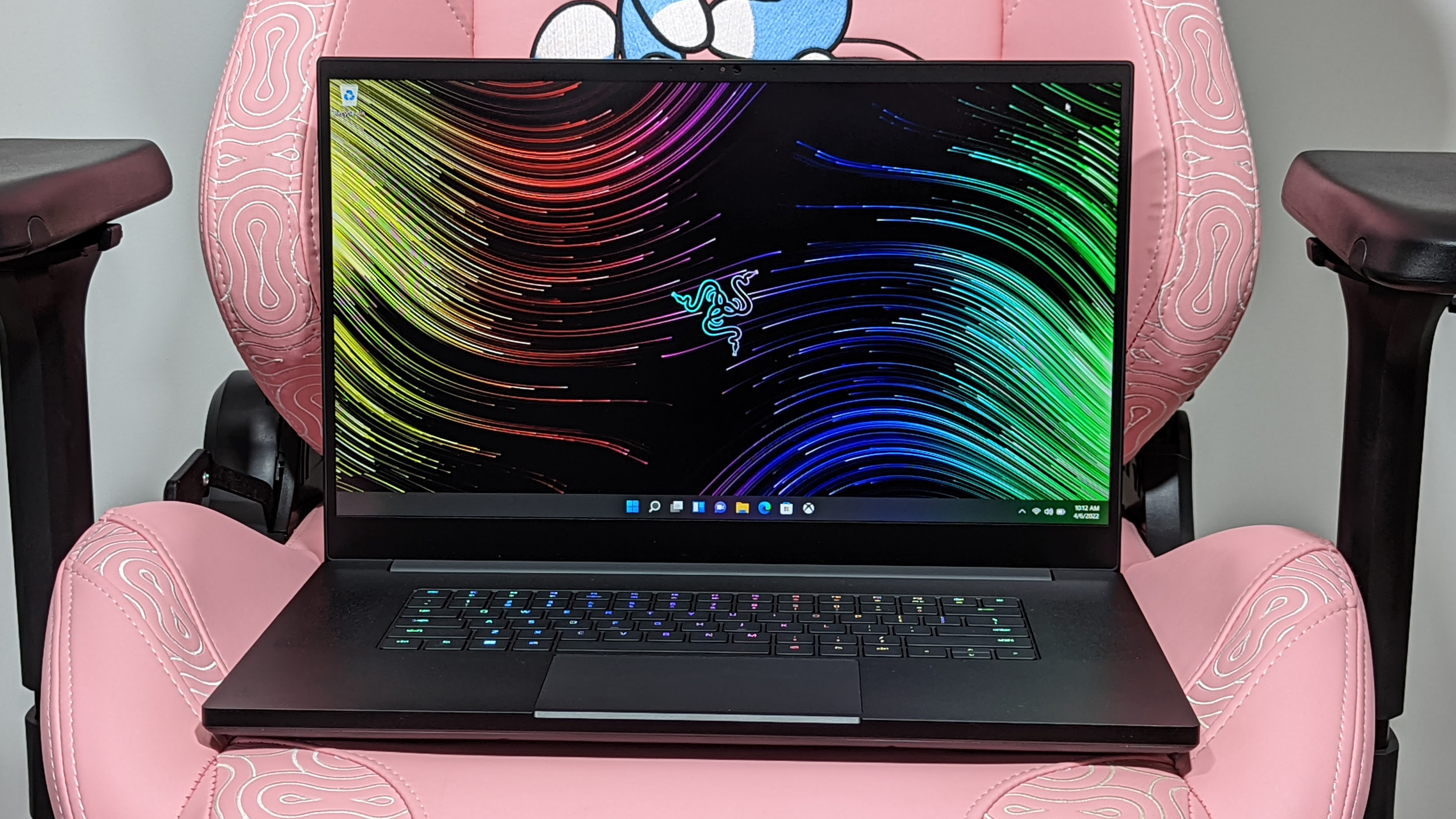
I watched the trailer for Massive Talent, and Nicolas Cage’s maroon jacket was vivid. Even when we cut to the tropical island, the greenery was lush. Unfortunately, the panel was too dim or any of these colors to truly pop.
I played Assassin’s Creed Valhalla, and I had trouble getting a good visual on anything during stormy scenes because of the screen's dimness. Yes, I could see, but not clearly. There were too many shadows, as if the contrast was turned all the way up. The greens, yellows, and reds of the village around me looked fine, but it could be better.
According to our colorimeter, the Razer Blade 17 covered 84% of the DCI-P3 color gamut, which just surpasses the 82.8% premium gaming laptop average. It’s also more colorful than the MSI GE76 Raider (74.5%) and Alienware x17 R2 (76%).
At 276 nits, the Razer Blade 17 is frustratingly dim, falling well below the category average (333 nits). It managed to surpass the MSI GE76 Raider (259 nits), but was swiftly crushed by the Alienware x17 R2 (325 nits).
Razer Blade 17 keyboard and touchpad
Despite my distaste for the size of the Razer Blade 17’s keyboard, it is comfortable to type on and the keys offer a pleasant click. However, the key travel is a bit short.
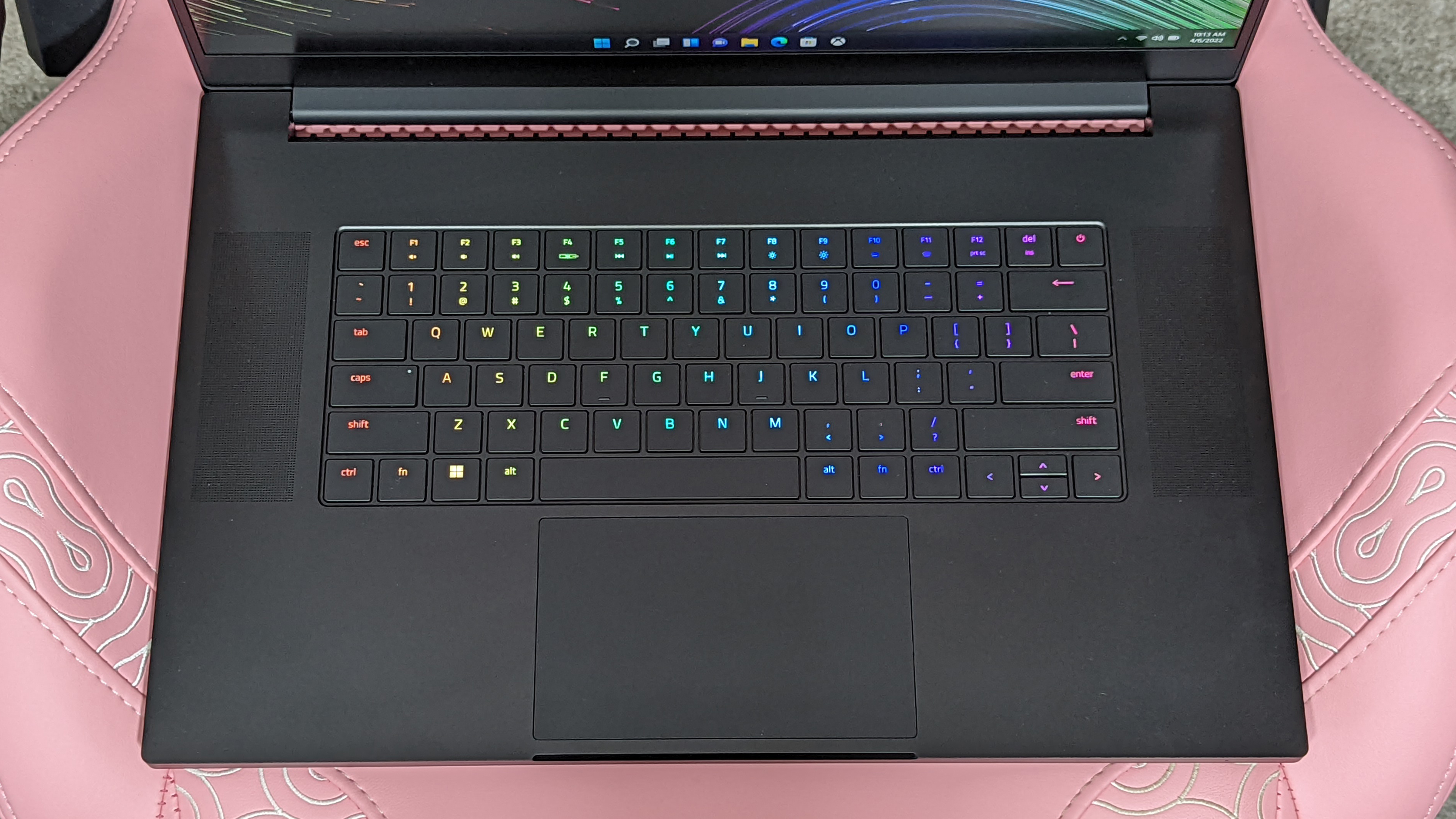
On the 10fastfinger.com typing test, I managed 80 words per minute, which is slightly above my current 78-wpm average. The distance and width of the keys helped me navigate them easier.
As far as RGB lighting is concerned, it’s all per key, and you can easily customize it through the Chroma Studio via the Razer Synapse app. There are plenty of presets, ranging from Wave and Starlight to Reactive and Audio Meter.
The 5.1 x 3.1-inch touchpad is soft, but a bit stiff to use, and it doesn’t depress as far as I’d like. The clicks weren’t as satisfying — bottoming out just before it could get that deep click.
Razer Blade 17 audio
Razer has a track record of stuffing crappy speakers in egregiously expensive laptops, so I was preparing for the worst, but I think I found some of the best laptop speakers around. The Razer Blade 17’s top-firing and bottom-firing speakers make for quite the experience.
I listened to Emily Finchum’s “Bones,” and I was immediately enthralled by the opening percussion that made it sound like each beat encompassed my surroundings. The vocals came in strong, showing off impressive mids and highs. When the chorus dropped, all of the instruments felt like they had a place.
I nocked an arrow and fired at a classic red barrel in Assassin’s Creed Valhalla, causing a rupturing explosion with plentiful bass. As I sailed around the rivers of England, the music played aboard was bright and defined. When I swam to shore and ran into one of many sidequests, the dialogue between two NPCs was crisp and clear.
You’ll find the THX Spatial Audio app onboard, and within it are settings for Music, Cinema, Gaming, Voice, and a custom section. You can configure each equalizer to your own liking within each preset. My favorites were the ones tied to the category I was listening to.
Razer Blade 17 gaming, graphics and VR
Hidden beneath the black metal slate lies an Nvidia GeForce RTX 3080 Ti GPU with 16GB of VRAM. That's the most powerful mobile GPU on the market at the time of writing. It ran Assassin’s Creed Valhalla at 89 frames per second as I traveled up the countryside searching for the next loot to plunder all on max settings at 1080p.
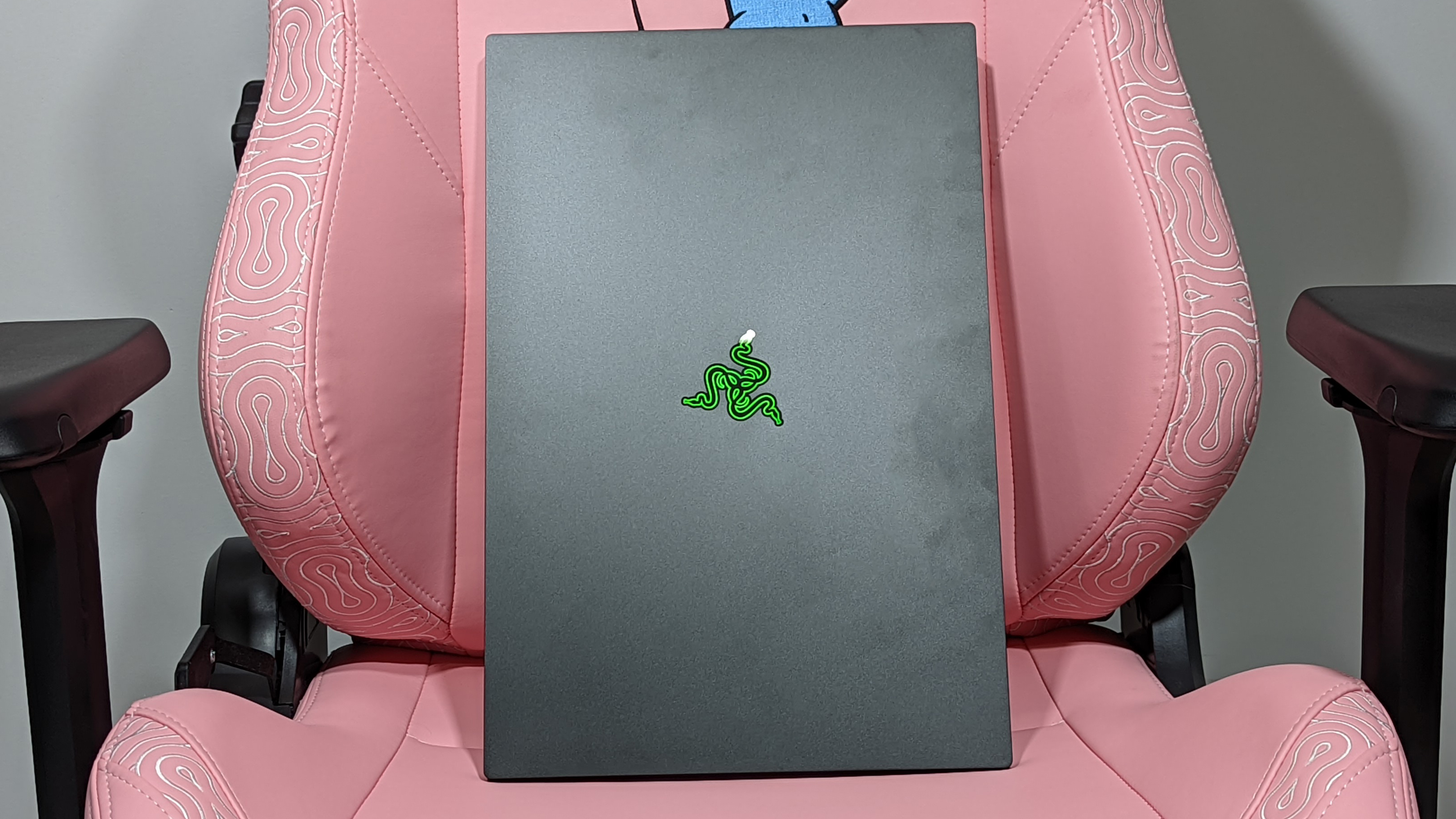
On the Shadow of the Tomb Raider benchmark (1080p, Highest, DX12), the Razer Blade 17 nailed 116 fps, speeding past the average premium gaming laptop (88 fps). Despite having the same GPU as the Razer, the Alienware x17 R2 (107 fps) and MSI GE76 Raider (112 fps) fell behind.
The Razer Blade 17 achieved an average of 96 fps on the Far Cry New Dawn benchmark, crossing the 92-fps category average with ease. However, it couldn't get past the Alienware x17 R2 (117 fps) and MSI GE76 Raider (113 fps).
On the Borderlands 3 benchmark (Badass, 1080p), the Razer Blade 17 hit a solid 100 fps, crushing the average premium gaming laptop (82 fps) as well as the Alienware x17 R2 (97 fps). However, the MSI GE76 Raider crossed over to 106 fps.
In a show of power, the Razer Blade 17 revved up 84 fps on the Red Dead Redemption 2 benchmark (Medium, 1080p), wasting the category average (67), MSI GE76 Raider (82 fps), and Alienware x17 R2 (78 fps).
Razer Blade 17 performance
The Razer Blade 17 is packing an Intel Core i7-12800H CPU with 32GB of RAM that easily juggled 40 Google Chrome tabs and five 1080p YouTube videos without a sign of slowdown.
On the Geekbench 5.4 overall performance test, the Razer Blade 17 scored 9,875, surpassing the average premium gaming laptop (7,266). However, the overclockable Intel Core i9-12900HK processors in the Alienware x17 R2 (13,710) and the MSI GE76 Raider (13,456) are much stronger.
The Razer Blade 17 transcoded a 4K video to 1080p in 7 minutes and 19 seconds, which drags behind the category average (6:30). It also doesn’t come close to the Alienware x17 R2 (4:45) and MSI GE76 Raider (4:44).
Razer’s 1TB SSD has a transfer rate of 1,240 megabytes per second, surpassing the average premium gaming laptop (1,178 MBps). Unfortunately, it once again trails behind the SSDs in the MSI GE76 Raider (1,775 MBps) and Alienware x17 R2 (2,268 MBps).
Razer Blade 17 battery life
Despite being a power-hungry beast, the Razer Blade 17 still managed to have a solid battery life. It lasted 6 hours and 5 minutes on the Laptop Mag battery test, which crushed the average premium gaming laptop (4:20) as well as the MSI GE76 Raider (4:57) and Alienware x17 R2 (2:58).
Razer Blade 17 webcam
The Razer Blade 17’s 1080p webcam is a tad bit refreshing in comparison with all of the trashy 720p shooters out there, but it’s still not great.
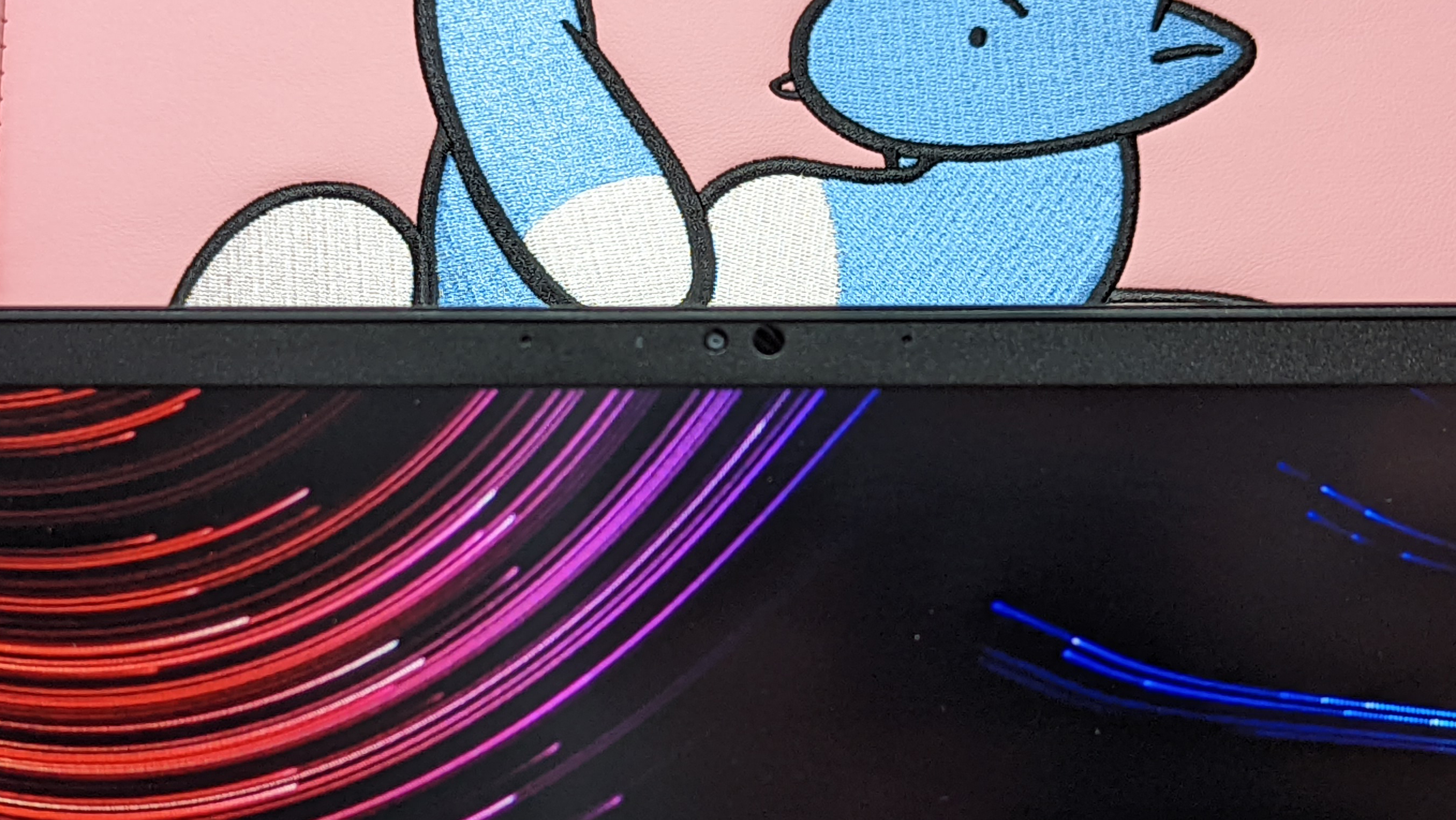
The color reproduced from my epic Wall-E pajamas were muted, and poor Wall-E looked as dreary as they did before they met Eva. My skin looked blotchy, and the windows behind me were completely blown out due to the poor contrast. I wouldn’t want to stream or play D&D with this webcam. I’d recommend you check out our best webcams page for something to suit your gorgeous face.
Razer Blade 17 heat
Ouch. Metal and heat do not go together. After gaming for 15 minutes, the underside of the Razer Blade 17 hit 114 degrees Fahrenheit, whipping past our 95-degree comfort threshold. The center of the keyboard and touchpad measured 112 degrees and 88 degrees, respectively. The hottest it got was 119 degrees on the underside, along the SN sticker.
Even when using it casually, it gets hot. After streaming a 15-minute video, the underside reached 104 degrees, the keyboard got 93 degrees, and the touchpad hit 84 degrees.
Razer Blade 17 software and warranty
Everything you could possibly need is located in the Razer Synapse app. It's here you can customize the lighting, create profiles, assign macros, register your device, and more.
There’s some Windows 11 bloatware, like Disney+, Spotify, and the ever offensive Solitaire.
The Razer Blade 17 comes with a one-year limited warranty. See how Razer performed on our Tech Support Showdown and Best and Worst Brands ranking.
Bottom line
The Razer Blade 17 is a solid gaming laptop that I’d expect to find in the mid-$2,000 range. You might be thinking that price is a bit too low for a laptop that’s as powerful as the Razer Blade 17. Well, power only goes so far. People need to see what they paid for, and if all they’re seeing is a far too dim display that belongs on a Chromebook, they’re not getting what they paid for.
If you have money to blow, consider the Alienware x17 R2 ($4,800). It’s also stupid expensive, but at least you get a pleasantly bright display.
Overall, the Razer Blade 17 is a solid gaming laptop for those that can find it at a discount and are willing to look at a different panel configuration.

Rami Tabari is the Reviews Editor for Laptop Mag. He reviews every shape and form of a laptop as well as all sorts of cool tech. You can find him sitting at his desk surrounded by a hoarder's dream of laptops, and when he navigates his way out to civilization, you can catch him watching really bad anime or playing some kind of painfully difficult game. He’s the best at every game and he just doesn’t lose. That’s why you’ll occasionally catch his byline attached to the latest Souls-like challenge.
